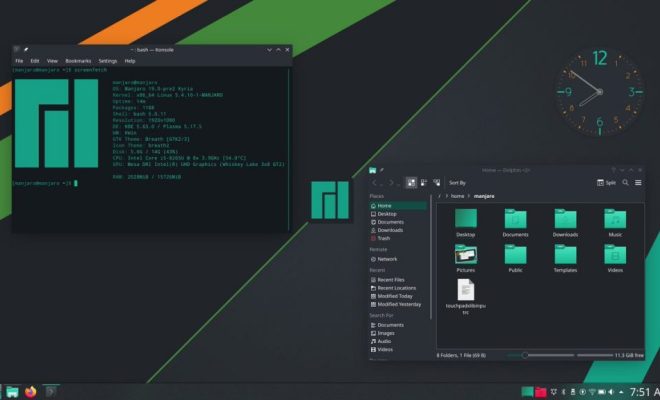4 Design Principles to Keep in Mind When Creating Online Courses

When you create an online course, you want it to be perfect. After all, you are not only catering to a world of learners but you are representing your business! Here are 4 design principles to keep in mind when creating online courses.
- Identify All of the Learning Objectives in the Course
You are going to have to take some steps to do this. Let’s break them down. Take your time and answer them one by one.
- What problem do your learners have? Your job with this course is to fix that problem. That brings us to the next question.
- What is the course’s primary purpose? The main objective is to fix that problem, of course, but how? Put it in words. Also, state the why. Why are you fixing that problem? Who are you fixing it for? How long will it take you?
- What are the exact concepts that you want to teach? To take your learner “from problem to fix,” there will be a specific path that you must take them on. This is where you are going to list those steps.
- How well should they learn them? How much should they know by the end of the course? Should they be an expert in the field? Should they still be a novice? Will there be another course to follow this one up? If there will be, you don’t want to make them an expert just yet. Don’t plan to give them all of your best stuff!
- Use verbs from Bloom’s Taxonomy to help describe the learner’s behaviors during and after the course. Bloom’s Taxonomy has six steps that a course’s objectives should follow to adequately, efficiently, and effectively teach a student. Use these steps and these verbs to expound on the previous step.
- What criteria will you use to measure achievement? If you know what your learners should know and what they should not know, you have your criteria. Write it here.
After you answer all of these questions, you can then convert them into learning objectives. Take those objectives that you have created and break them down into lessons or modules. Give each its own related activity.
Write down the objectives for each lesson or module (what they’ll learn). Also, note what they will still need to learn. This way, you’ll be sure to cover it later.
- Outline Your Online Course
This is the most vital part of the process. Everything starts and ends here. If you’ve done Step 1, this step will proceed more smoothly.
Outlines can be created in several ways: conceptually, chronologically, topically, or by the learning process. You must decide how you are going to present your material before you can begin creating your outline.
After you decide this, you must decide a few other things:
- How long will your course be?
- Who is your target audience?
- How will you keep your learners interested and engaged?
- What do you need to teach in each module for your learner to progress to the next module?
- What will the outcomes be from each module?
- Are you trying to teach too much at once?
- How can you scaffold up or down?
- How will you assess those outcomes?
Now that you know your objectives and outcomes for each lesson, provide an overview for your learners of those things at the beginning of each lesson. This will give your learners an idea of what is to come, motivate them to keep going, and help them retain the information since they are introduced to it more than once.
Keep your lessons to about five minutes apiece. If you go over or under by a little, that’s fine, but keep the average thereabouts. This way, your learners can get used to a specific pace of learning and settle in.
Make sure that your outline plans for the assessments. A mistake many amateur course-creators make is that they forget to plan out the assessments. You should have an assessment (at the least) at the midpoint and the end of each unit. Some course-creators have them more often to encourage interactivity and engagement.
Lastly, the information that you present should move in a particular flow. The content should flow from general to specific, from simple to complex, and from concrete to abstract. And it should be presented, and thus flow, in an easy to follow, clear, and concise manner.
- Design Your Platform
Depending on your Learning Management System (LMS), learning portal, or Social Learning Management System (SLMS), you may have an abundance of options in color, fonts, and layout. A few places you might be considering are Pedagogue, Miami Visuals, or Teachable.
Pedagogue is an SLMS. A Social Learning Management System (SLMS) merges the traditional aspects of an LMS with the features of social media (social streams, chat, groups) to supercharge learning.
Miami Visuals is a course creator (learning portal), website builder, and funnel builder. Therefore, you can get the benefit of all three in one. Miami Visuals is very simple to build in, has excellent customer service, and is much cheaper than Kajabi or Teachable.
Teachable is also an online hosted platform, like Miami Visuals. They are better-known and used more, but they are more expensive.
In designing, you don’t want to forget to add that color. Don’t use a lot of bold or intense colors. They draw the eye too many directions. If you do use bold colors, use them on a neutral background.
Your fonts should be legible. By this, I mean the colors need to be easily seen, and the font needs to be easy to read. I know that curly fonts are pretty, but some are difficult to decipher and remember that younger learners may not yet have the ability to read cursive handwriting.
- Design Your Layout
Lastly, I want to talk about the layout of your platform. There is a lot that goes into this.
Some of it has to do with the number of pictures and graphics you put on your page. Make sure your page is not cluttered.
Be careful to design your lessons’ layout so that there is not one, big block of text. Your lessons should have titles, subtitles, introductions, and conclusions. When there is merely a wall of text, the eye gets lost, and the brain gets fatigued. Additionally, these add an extra element in that they allow the learner to rescan the material to get a better idea of what they have just learned.
Conclusion
I realize that creating online courses can seem overwhelming. However, if you follow these four principles, it will be much simpler than without. You’ll have your course up and running in no time! Good luck!






